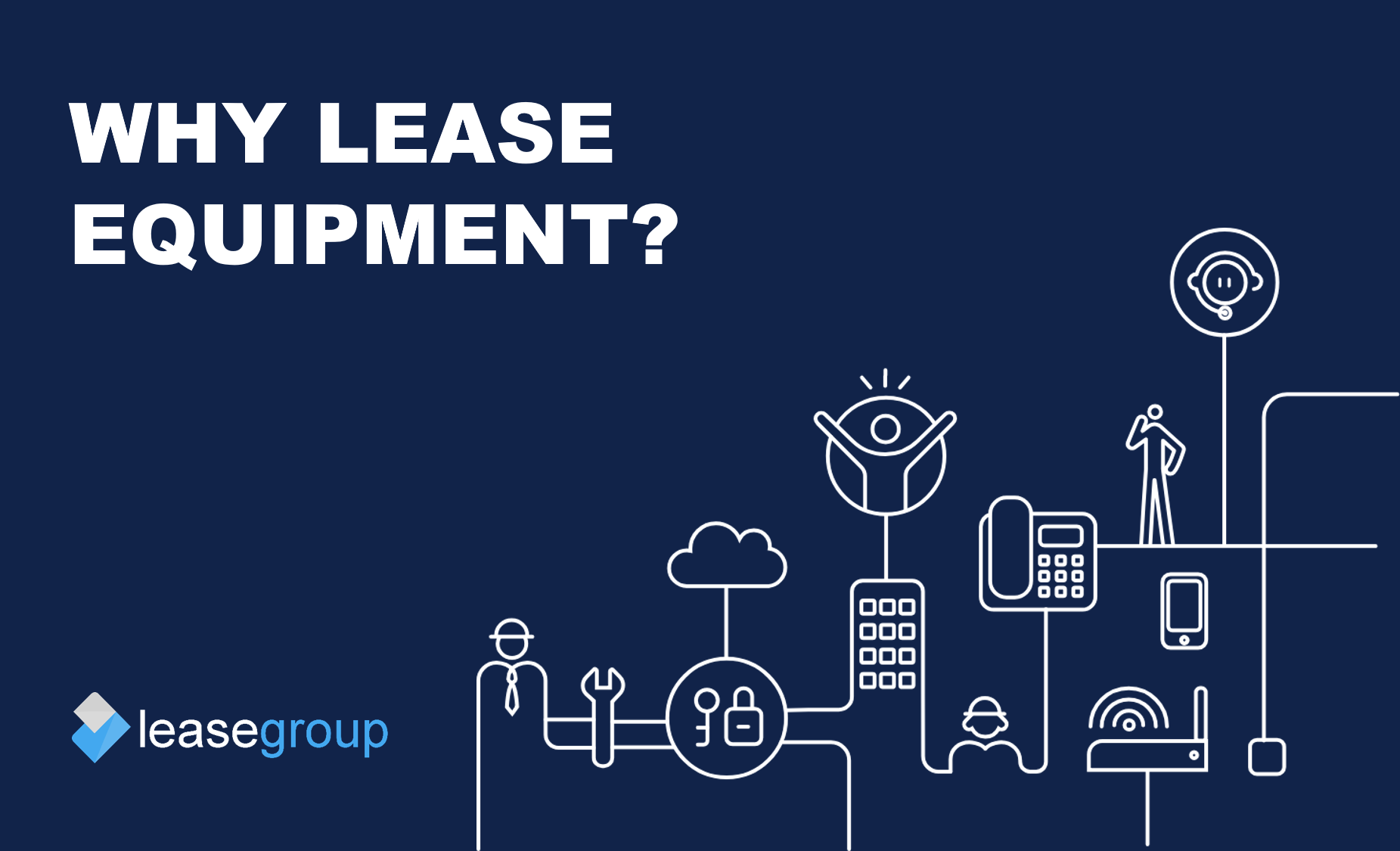Equipment leasing is called upon by businesses big and small as a cost effective and budgetable way of acquiring the latest technologies. Here we will run through the key reasons for leasing equipment versus purchasing technology and services outright.
Firstly though, what exactly is Equipment Leasing?
Equipment leasing is quite simply the process of acquiring equipment and technology via third-party finance and paying for it in manageable monthly amounts over a pre-agreed term.
Equipment leasing allows any type of business to affordably acquire business-essential equipment and technology without the upfront expenditure. Leasing enables the business to preserve their cash-flow and put their reserves to much more profitable uses, such as investments, hiring sales staff and growing the business through marketing.
Leasing spreads the cost of equipment from anything between 12 and 84 months, and so the cash impact is far less versus buying outright. It also enables businesses to upgrade to better, more advanced technology, as the more budgetable repayment means companies are less likely to cut corners or opt for cheaper alternatives.
Many profitable businesses choose to upgrade their equipment, assets and technology via equipment leasing because it offers tax advantage over buying equipment outright. A pure lease rental agreement is 100% tax deductible due to it drawing upon a company’s operating budget, as opposed to it’s capital budget.
How does Equipment Leasing work?
Equipment leasing is like a loan, only the loan is secured by the assets a company has acquired, which allows for a lower rate of interest. The equipment on lease is purchased by the third-party finance company and rented to the business, so the risk to the lender is far lower than a loan, as the equipment could be recovered and sold if the customer wasn’t to keep up their contractual obligations.
What are the benefits of Equipment Leasing?
Putting a business’s hard-earned money to better use is the #1 reason for leasing equipment. 80% of the FTSE 500 leases business equipment and technology to aid their cash-flow, after all, why would a company tie up cash in equipment that is ever depreciating in value?
Here are some other benefits:
• Afford the best quality – no compromises
• Flexible tenures from 12 – 84 Months
• VAT is charged on the smaller payments and not the large fee at the start
• Tax allowable — rentals are an operating expense and so are 100% tax deductible
• Payments are fixed for the term
• One rental can include all equipment and ancillary costs i.e. consultancy, installation, training and maintenance
• Keep credit lines intact — Leasing does not affect any of a business’s existing credit lines
• Businesses are free to upgrade, make additions, or settle the finance agreement at any point
• Flexible options at the end of the Lease – including indefinite ownership
Did you Know? Leasing is applicable to a great number of equipment and technology types, including software. The equipment must be used by the business indicated on the lease contract and a location for where the equipment will reside (be used) throughout the course of the contract should also be clear.
Here’s an example of the equipment and technology that can be acquired via Leasing:
• Telecoms
• IT
• Office Furniture
• Software
• Fire and Safety
• Cleaning and Laundry
• CCTV and Security
• Vending
• Gym Equipment
• POS
• AV Equipment
• Renewable Energy (Solar panels, EV Charging points)
• Professional service charges e.g. installation, delivery and training
Note All lease applications must meet the lender’s credit approval criteria, however funding can be offered to companies with as little as 3 month’s trading. The interest rate may be higher for start-ups and companies with unsupportive financials.

